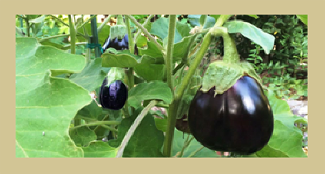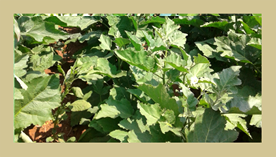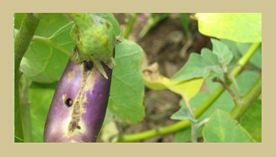
Welcome to Brinjal Crop management& Diagnostic solutions

Brinjal or eggplant (Solanum melongena L. 2n=24) is an important solanaceous vegetable crop in many countries particularly India. It is cultivated throughout the country except in higher altitudes where it succumbs to frost injury. It is highly productive and usually finds its place as the poor man’s crop.
In India, brinjal is being consumed in various forms such as a cooked vegetable, fried and stuffed vegetable and Bartha making.
Our Research
Though brinjal can be grown on all types of soils, generally, well drained sandy-loam and clay-loam soils are preferred for brinjal cultivation ...more details









The soil should be deep, fertile and well drained. A soil pH of 5.5 to 6.0 is good for better growth of brinjal.
Seed rate, Nursery Management.
Brinjal is a warm season crop and requires a long warm growing season.
Spacing & transplanting . . .
The planting distance depends upon the soil fertility, growing season and cultivar. Usually, 75 x 60 and 90 x 90 cm distance between rows
Manures, Fertilizsers, weeding . .
The fertilizer requirement of brinjal also depends upon soil type, crop rotation, season, genotype and the region of growing
High yields of brinjal are obtained under optimum moisture conditions. Timely irrigation is essential for good fruit set and its development
Crop rotation . . .
Rotating Brinjal with non- solanaceous vegetable crops like cucurbits, legumes will reduce the insect and disease incidence
Growth regulators, Pinching . . .
Investigation have revealed that the beneficial effect of growth substances on fruit set in brinjal.
Storage . . .
Storage extends the consumption period of vegetable. Brinjal fruits can be stored for 1-2 days in summer and 3-4 days in winter season provided they are kept in shade
Harvesting & Yield . . .
Brinjal fruits are harvested for the market when they have developed to a normal size, have good colour, are immature, tender and have not lost culinary qualities. . .




